1947
Birth of the Air Force
As aviation advanced after the Wright Brothers’ first flight, the nation’s military aviation service followed a constantly growing lineage from 1907 to 1947. Officials discussed the establishment of an aeronautical academy for decades, and when the Air Force became a separate service in 1947 under the National Security Act, plans for an Air Force Academy officially got underway.

W. Stuart Symington, first Secretary of the Air Force and Gen. Carl Spaatz, first Air Force Chief of Staff, announcing the new organizational set-up for the Department of the Air Force.
Read The Early Years (1947 – 1954)
1954
Scouting Locations
Harold E. Talbott, the Secretary of the Air Force at that time, appointed a commission to assist him in the selection of a permanent site. After traveling 21,000 miles and considering 580 proposed sites in 45 states, the commission recommended three locations – Alton, Illinois; Lake Geneva, Wisconsin; and Colorado Springs, Colorado.
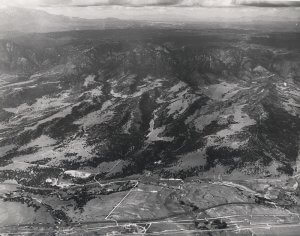
Aerial view of the future North Gate.
1955
The First Class
The first class of 306 men were sworn in at a temporary site at Lowry Air Force Base in Denver, Colorado. Lt. Gen. Hubert R. Harmon, a key figure in the development of the Academy, was recalled from retirement to become the first superintendent.

The first class of the U.S. Air Force Academy is sworn in.
1964
Building Strength
As the Cold War continued, the nation’s reliance on airpower as the primary agent of deterrence highlighted the need for more Air Force officers. Initially, the U.S. Air Force Academy’s cadet strength was set at 2,529. On March 3, 1964, President Lyndon B. Johnson signed Public Law 88-276, authorizing both the Academy and West Point to expand to the Naval Academy’s strength of 4,417.
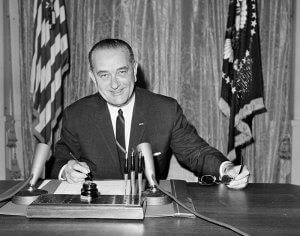
President Lyndon B. Johnson signed Public Law 88-276 in 1964, allowing the Academy to expand its student body.
1967
Cadets in Conflict
The Vietnam War was the first war in which Academy graduates fought and died. Capt. Lance P. Sijan, Class of 1965, was severely injured when his F-4 exploded on a bombing run November 9, 1967. He managed to evade capture for 45 days despite a fractured skull, mangled right hand and a compound fracture of his left leg. He died a prisoner of war on January 22, 1968 and became the first Academy graduate to be awarded the Medal of Honor in March 1976. Sijan Hall was named in his memory.

Capt. Lance P. Sijan, Class of 1965, was the first graduate of the U.S. Air Force Academy to receive the Medal of Honor.
Read The Building Years (1955 – 1969)
1976
Female Falcons
On June 28, 1976, a group of 157 pioneering women joined the Cadet Wing. Thanks to then-Academy Superintendent Lt. Gen. James R. Allen and his relentlessly optimistic leadership, the incorporation and transition was relatively smooth. Ninety-seven of the original female cadets completed the program and graduated May 28, 1980.

The U.S. Air Force Academy’s first graduating class that included women was the Class of 1980.
1983
Cadets in Space
Even before the formal launch of the space shuttle program in 1972, space had been part of the Academy curriculum. As early as 1965, the school offered a major in astronautical engineering—one of the few accredited undergraduate astronautics programs in the nation. Col. Karol Bobko, Class of 1959, was the first graduate in space, piloting the space shuttle Challenger in April 1983. To date, 39 Academy graduates have become astronauts for NASA, producing the second highest number of astronauts next to the Naval Academy.
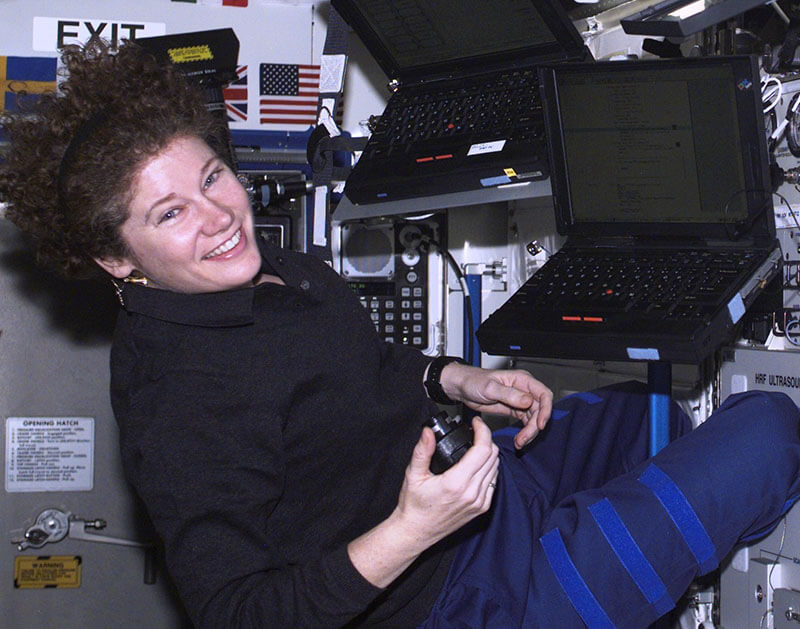
Lt. Gen. Susan Helms, class of 1980, flew on five shuttle missions and took part in the longest space walk ever recorded.
Read The Expansion Years (1970–1999)
2001
September 11 Attacks
While Academy cadets have always studied tools that combat terrorism, the September 11, 2001 attacks on the World Trade Center and Pentagon changed the world and the Academy forever. The Academy lost two graduates when the Pentagon was hit, as well as LeRoy Wilton Homer Jr., Class of 1987, who was the First Officer of United Airlines Flight 93, which was hijacked and crashed near Shanksville, PA. Since the resulting military campaigns began, several Academy graduates have been lost or sustained combat injuries.

The Academy’s 9/11 Memorial was dedicated on September 9, 2011. The memorial features two granite slabs, representing the Twin Towers, atop a five-sided foundation that represents the Pentagon.
2006
Campus Refresh
In 2006, the Academy launched a $1 billion multi-year construction plan to update several areas of the campus’ 60-year-old infrastructure. The resulting Academy Energy Strategic Plan detailed a vision to improve the Academy’s stewardship of fiscal and natural resources by becoming a leader in the world of renewable energy.

A 6-megawatt solar array, completed in 2011, occupies 30 acres on the Academy’s southeast corner and produces 11-15% of the bases’s energy demands.
2009
Miracle on the Hudson
One Academy graduate became a nationwide hero on January 15, 2009, when he safely landed a US Airways flight in the Hudson River, saving the lives of all 155 people on board. The aircraft lost power in both engines due to bird strikes. The pilot, Chesley “Sully” Sullenberger III, is a member of the Class of 1973.
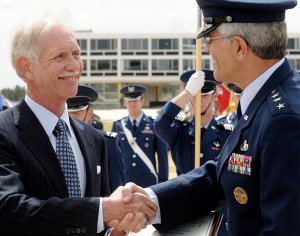
Capt. Chesley B. “Sully” Sullenberger III received an airmanship award from the U.S. Air Force Academy.
2010
Attack of the Drones
Public interest in remotely piloted aircraft (RPA) skyrocketed due to increased non-military uses and portrayal in popular culture. For the U.S. Air Force, the use of RPAs is a vital mission set that delivers air support to combatant commanders throughout the world. The Academy brought RPAs into the airmanship curriculum and graduated the first 24 cadets in February 2010. These less familiar aircraft in the Air Force’s fleet include the MQ-9 Reaper, RQ-1 Predator and RQ-4 Global Hawk.
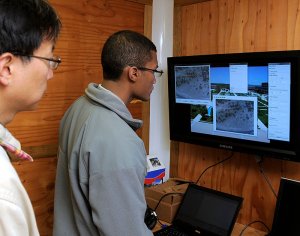
Cadets work on the Academy’s remotely piloted aircraft program.
Read The Future (2000 – Present)










